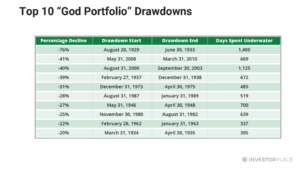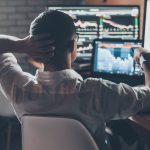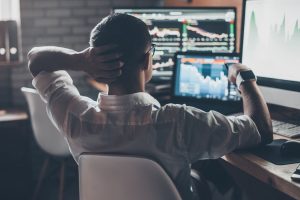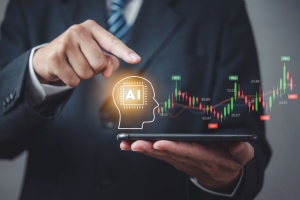
Editor’s Note: Every AI company that has reached a $1 trillion market cap has made its investors rich. I believe I found the next one.
It’s a company that’s using a new application of AI that will revolutionize a $13.1 trillion industry. I’ll share more details during my The Next $1 Trillion AI Stock strategy session scheduled for Tuesday, May 21st at 7 p.m. Eastern.
You can reserve your spot by going here.
Hello, Reader.
If you ever stumble upon a genie offering to grant you three wishes, you might exhaust your first two on things like a younger physique or a beachfront mansion.
But if you’re an investor, by the time your final wish rolls around, I’ll bet you opt for something of major, practical value… like the ability to invest as perfectly and knowingly as God himself.
Ironically, applying God-like investment acumen to the stock market would subject you to long periods of hellishly poor results.
That’s not a guess or an assumption. It is the shocking conclusion of a 2016 research study.
Allow me to salute Captain Wesley Gray, a Marine veteran with a Ph.D. in finance from the University of Chicago, who designed one of the most fascinating and illuminating investment studies ever conducted.
Titled Even God Would Get Fired as an Active Investor, this study is now 8 years old, but the lessons it imparts are as eternal as God himself.
In today’s Smart Money, I’ll present this captivating study that explains the obstacles even an omniscient figure like God would run into as an investor. Hint: Having patience is key.
Plus, although patience is an investing virtue, I’ll also share a timely AI opportunity that you don’t have to wait for. It’s one you don’t want to miss out on.
Let’s dive in…
Infinite Wisdom, Finite Returns
To conduct his study, Gray tracked the hypothetical portfolio only a “god-like” investor could have created by knowing “ahead of time exactly which stocks were going to be long-term winners and long-term losers.”
Spanning from the end of 1926 through the end of 2016, Gray’s researchers computed five-year “look ahead” returns for the 500 largest U.S.-traded stocks, and then split those results into deciles. The top decile (i.e., 10%) contained the 50 stocks that would produce the largest gains over the following five years. The bottom decile contained the 50 worst-performing stocks over the following five years.
Gray’s “God Portfolio” would buy the top decile of five-year gainers at the start of each five-year period, and then rebalance the names in the portfolio on January 1 of every fifth year.
As Gray explains…
The first portfolio formation is January 1, 1927, and is held until December 31, 1931. The second portfolio is formed on January 1, 1932, and held until December 31, 1936. This pattern repeats every fifth year…
As expected, a portfolio formed on the names that have the best 5-year performance, have the best 5-year performance. Duh. God would compound at nearly 29% a year… but the details are interesting.
The “details” to which Gray refers are the shockingly large drawdowns – or mark-to-market losses – the God Portfolio would have endured during its 90-year run.
For example, this “perfect portfolio” would have plummeted 76% from August 1929 to May 1932 and spent nearly four years underwater.
What We Can Know
But the pain doesn’t end there. On nine other occasions, the God Portfolio would have suffered drawdowns ranging from 20% to 41%. The chart below details those bumps in the road.

Clearly, a “perfect portfolio” can deliver imperfect results for a time. Even possessing perfect foresight, enduring a 20% drawdown – or 74% drawdown – would not be a pleasant experience. But at least you would know the delightful outcome in advance.
We mere mortals possess no such assurance of “things not seen.” For all we know, a 20% drawdown could become 30%, 40%, or 80%… and it could last for many years. We have no way of knowing.
So, the only thing we can know with relative certainty is what we own, not where it’s headed.
We can never know what others will pay for it tomorrow. But if what we own is valuable, and is ultimately increasing in value over time, others will recognize that value eventually… and pay for it.
Although I can’t say I’m as omniscient as God himself, I do know when something is valuable… and when to exercise patience.
For example, in my trading service, I issued a buy recommendation in November 2019 on a wireless telecommunications company called Aviat Networks Inc. (AVNW) – a 5G play.
Just four months later, Aviat had slumped nearly 50% to nearly $3 per share. However, given its fundamentals and growth trajectory, I expected Aviat to move up substantially. So, we sat tight and waited for the stock to rebound.
And did it ever.
Aviat Networks began to turn around in May 2020 and has not looked back since. Since my recommendation, the stock is now up around 350%!
While patience is a virtue, though, meeting the moment is often just as important.
I believe one such moment is here – and it’s all about the next phase of the AI Revolution that I’ll be talking about during my upcoming strategy session.
The first phase of the AI boom was led by companies like Nvidia Corp. (NVDA), Microsoft Corp. (MSFT), and Alphabet Inc. (GOOG). In this early stage of the AI boom, investors didn’t need patience to see incredible gains.
However, as the AI boom is moving into a new phase, a different set of companies will lead the way. For example, I’ve identified a company that’s using a new application of AI that could revolutionize a $13.1 trillion industry. And the time to act is now.
I will share more details about this timely opportunity at my The Next $1 Trillion AI Stock special strategy session on Tuesday, May 21, at 7 p.m. Eastern time. During the event, I’ll also share my AI accelerator strategy that could help you make up to 40 years of Nvidia-type gains on this stock in mere months.
Reserve your spot for that strategy session by going here now.
Regards,
Eric Fry






